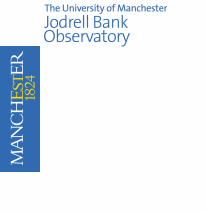MSc Projects 2006/2007
Pulsars provide the nearest thing to a physicist's dream come true. Being the end-point of stellar evolution, they are densest bodies next to black holes and give us an insight into the most extreme physical conditions of matter density, pressure and magnetic field observable by man. They also provide the most precise clocks known to humankind for undertaking unique experiments of gravitation and general relativity. Furthermore, they can be used as probes of the distribution of ionised material and magnetic field in the Galaxy with a precision which nothing else can. We use the telescopes at Jodrell Bank, Parkes (Australia) and Arecibo (Puerto Rico) in this work and frequently travel to the foreign instruments to make observations. The pulsar group at Jodrell Bank are arguably the most productive in the world in this area and have discovered more than three-quarters of the known population of these elusive and fascinating objects.
There are several main active areas of research in the general area of pulsar astronomy which would support projects which would be ideal for students, starting in September 2006. While outline some of these below, we can usually taylor projects to match a student's interest. Portions of a further three projects listed on the PhD page may also be suitable for MSc students. Links to these projects can be found at the bottom of this page.
Can we detect star-quakes in pulsars from their pulse shapes?
A number of young pulsars are observed to undergo sudden spin-up in their rotation. This increase in spin-frequency can be interpreted as the event of a star-quake during which the structure of the neutron star changes. It has been proposed that this structural change may also be reflected in changes in the magnetic polar cap region on the surface of the neutron star from which the radiating plasma originates. In this thesis the student would investigate the pulse properties of pulsars before and after a detected glitch. This study, using the Jodrell Bank pulse profile and timing database, would be the first of this kind. For further information, please contact Michael Kramer (mkramer@jb.man.ac.uk)
Properties of the Parkes Multibeam pulsars
The Parkes Multibeam Survey for pulsars has been the most successful survey in history. With the discovery of over 700 pulsars, it has produced nearly as many pulsars as all previous surveys put together. Apart from their initial publication, the majority of the new pulsars is largely unstudied. In this thesis, the student would investigate the timing properties of these pulsars, perform updated flux density measurements and study their pulse properties. With this unique and largest existing sample at hand, the results of this thesis will provide important insight into the characteristics of the pulsar population and their emission properties as a whole. For further information, please contact Michael Kramer (mkramer@jb.man.ac.uk)
